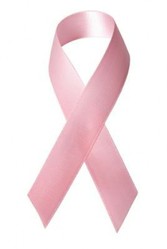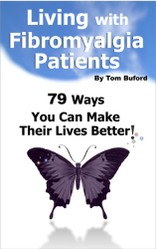
What Are the Treatment Options for Breast Cancer?
by Beaner
I was diagnosed with Stage IIB breast cancer at the age of 31. This describes the treatment plan that I am currently undergoing.
My Diagnosis
Breast Cancer Staging
On June 6th, 2011 I received the news that I never expected to hear: the lump I had felt a month prior was indeed breast cancer. Invasive Ductal Carcinoma (IDC) to be exact. How does a 31 year old get breast cancer? I have been asking myself that question for the last 6 months as I've been undergoing treatment and dealing with some pretty crappy side effects to beat this evil disease.
There are 4 stages of breast cancer, Stage 0 through Stage 4. The staging is determined by the size of the tumor, the number of lymph nodes that are also positive for cancer, and whether or not the cancer has spread to distant sites. Stage 0 is known as "in situ" or pre-cancer; it has not invaded the surrounding tissue. Stage I and Stage II are considered "early stage" breast cancer. Stage III is more advanced (the tumor is larger and there are a number of lymph nodes involved). Stage IV means that the cancer has metastasized and has spread to other organs (typically the lungs, brain, bones, and liver). My tumor was 4 cm and had spread to 2 lymph nodes but not to any other organs. That is classified as Stage IIb.
The typical treatment options for breast cancer at this stage include surgery, chemotherapy, and radiation. Of course, you do not have to do the recommended course of treatment that your medical team lays out for you. But I am young and decided that I needed to be aggressive and do whatever was offered to me to rid myself of this cancer and live a long healthy life.
Treatment Option #1 - Surgery
Lumpectomy or Mastectomy
When you have breast cancer, your doctor will always recommend surgery to get rid of the lump or block(s) of in situ (pre cancer). There are two different types of surgery that can be performed:
1. Lumpectomy: This surgery only removes the cancerous tissue and leaves the rest of the breast tissue. A lumpectomy is also known as breast conservation surgery. Typically a lump can be removed without much change to the appearance of the breast. However, it is imperative that the breast surgeon get clear margins. This basically means that they must be able to remove all of the cancer. If the margins are not clear, the patient can have another lumpectomy to try to get the rest of the cancerous tissue. Sometimes a mastectomy is warranted.
2. Mastectomy: This is the complete surgical removal of all the breast tissue. If the cancer is only in one breast, a patient can choose to have a mastectomy just on that breast (single). Sometimes, depending on genetic testing and/or personal preference, both breasts are removed.
Due to the fact that I also had a block of in situ cancer running vertically in my right breast, the surgeon did not think I would like the outcome of a lumpectomy; it would look pretty deformed and would need to be reconstructed anyhow. Although I am not a carrier of the BRCA 1 or BRCA 2 genetic mutation (which is associated with a high risk of both breast and ovarian cancer), I chose to have a double mastectomy with reconstruction. I am too anxious of a person and I did not want to worry about the cancer coming back in the remaining breast tissue. Although breast cancer can occur again after a mastectomy, it's only about a 1%-2% possibility.
Women are now offered reconstruction options that must be covered by insurance. I will have two silicome implants placed after all of my active treatment is over.
Breast Cancer Awareness
Treatment Option #2 - Chemotherapy
Before or After Surgery?
Not all breast cancer patients are offered chemotherapy. Stage 0 and Stage 1 breast cancers usually do not warrant chemo. Also, the age of the patient is taken into account. Older patients who suffer from other illnesses or will suffer an extreme loss of quality of life may not be recommended for chemo, either.
When is chemo a part of the treatment plan? When you are young, have an aggressive tumor as determined by pathology, and if it has spread to lymph nodes and other organs. I fit into all of those categories: I am 31, my tumor was very aggressive and ready to spread to other parts of my body, and I had 2 lymph nodes positive for the cancer.
Chemotherapy is given either adjuvantly (after surgery) or neoadjuvantly (before surgery). Sometimes a tumor is determined to be so large that it benefits the patient more the shrink the tumor prior to surgery and have a better chance at getting clear margins when removing it (especially if the patient wants a lumpectomy). Other times, such as in my case, I knew I was doing a mastectomy so it was fine to remove the tumor first and then do chemo.
Why do you need to do chemo if you have surgery first and they remove the tumor? The chemotherapy is like an insurance plan. Cancer cells may have escaped from the breast through the lymphatic system or the blood stream. Since there is no way to tell if there are other cells floating around, chemo is given to kill those rogue cells and try to prevent them from forming tumors in other areas of the body.
Treatment Option #3 - Radiation Therapy
More Insurance Against Cancer
Radiation for breast cancer involves a beam of radiation aimed at different areas of the cancerous breast and is administered by a machine. The radiation kills and/or damages cancer cells so that they will stop dividing. This is another "insurance policy" to try and prevent the cancer from coming back by killing other rogue cells, but it is concentrated only in the surgical area. Although chemotherapy does a good job of killing cancer cells throughout the body, due to surgery it may not be able to reach the breast as best as it could.
Not all breast cancer patients are provided with this treatment option. Oftentimes, radiation is recommended only in the following cases:
1. The patient opts for a lumpectomy
2. The tumor is (or was) large
3. There were a number of lymph nodes that were infected with cancer
In my case, radiation was a gray area. It used to be that if the patient only had 1-3 lymph nodes involved, radiation was not given. Now research is saying that any lymph node involvement will benefit from this treatment and drastically reduce the recurrence rate. Again, due to my age and the aggressiveness of my cancer, I was recommended for radiation and agreed to do it.
The Choice is Yours
It's important to listen to your doctors and understand the breast cancer treatment options that are being given to you. Ask questions. Do your own research. Ask them to give you the survival rates with and without the therapies. Only you can decide what you want to do. Some people listen to their doctors without question and follow everything that they advise to a "t". Others do not believe in conventional treatments and will not adhere to any of the recommendations; many of them only want to partake in alternative medicine.
I am doing both. I completed surgery and chemotherapy and am currently undergoing radiation. But I am also doing acupuncture, Chinese herbal medicine, and supplementation. Although the conventional treatments have been harsh, these are therapies that have proven to work in some patients and I agreed to do them. I need to give myself the best possible chance to survive.
You might also like
What is Fibromyalgia and What Causes FibromyalgiaThe pain and emotional agony of fibromyalgia has stricken many American women...
How to Get Toned Firm Legs Without Hard WorkoutsGet the facts on the easiest way to get your legs in shape with as little tim...













 Taking the Confusion Out of Online Credit Card Processingon 02/23/2012
Taking the Confusion Out of Online Credit Card Processingon 02/23/2012
 Why Businesses Need Merchant Accountson 02/23/2012
Why Businesses Need Merchant Accountson 02/23/2012
 Lalaloopsy Dollson 01/10/2012
Lalaloopsy Dollson 01/10/2012
 Ovarian Cancer Stageson 12/13/2011
Ovarian Cancer Stageson 12/13/2011



Comments